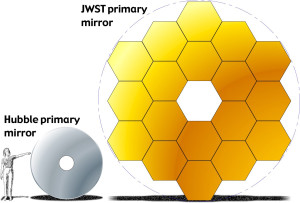Science Seen Physicist and Time One author Colin Gillespie helps you understand your world.
Smashing Science
He that breaks a thing to find out what it is has left the path of wisdom.
So says J.R.R. Tolkien’s hero-wizard, Gandalf, to Saruman (an anti-hero wizard). More than a century of successful atom smashing seems to say that Gandalf got this wrong. But let’s take a closer look at what we have—and what we have not—learned from smashing science. There’s good news here; there’s bad news too; and in the end there may be more good news.
First, good news: We’re learning how to manage matter. Tracking bits of atoms has revealed much about many kinds of atoms, what is in them and what glues the bits together. In this way we’ve learned from atom smashing how to build with atoms and arrange them to do useful things. For example, arranging atoms led us to create new fields like quantum chemistry and solid-state physics that deeply underpin the world’s economy.
So when American physicist and science writer Chad Orzel supports Saruman and claims that ‘taking things apart is the best way to learn how they work’ he seems to have both history and economics on his side. Yet it seems that what we learn by smashing atoms leads to progress that lacks understanding. Indeed it leads to progress that blocks our vision. Tolkien didn’t doubt the progress. Was he right in thinking smashing is not wisdom?
Why the vision block? Another look at history reveals that physics made a choice some ninety years ago to chase whatever works and to neglect—even deride—efforts aimed at understanding. The so-called Copenhagen interpretation of quantum theory drove this choice. This interpretation says there is nothing to understand. American physicist David Mermin aptly says its motto is ‘shut up and calculate’. The key to what impedes our understanding of physics is: This motto works so well nobody can gainsay it.
Many not realize most physicists who think about such matters share this view. But this should occasion no surprise; most physics teachers tend to teach it. And if you, like many, find physics hard to understand, take heart. It’s not your fault. Today’s physics offers little in the way of understanding. It offers well-worn words—like space, time, quantum, spin, field, particle—that gloss over the fact that physicists don’t understand their meanings. They are modern myths and they connect to practical results through arcane mathematics.
That’s the bad news. But soon there may be more good news: There are signs that pressure’s building for a change. Sometime soon that vision block may break. When it does, what kind of physics might we see?
Well, we might see theory that’s driven more by ideas and less by math, just as it was a century or more ago. And the ideas will re-examine space and time at the smallest scale and find that they themselves are made of quanta, giving us new depths of understanding for those words.
And, on the experimental side, the multi-billion-dollar Large Hadron Collider may be the last of the vast  atom smashers. Instead we might see physicists using the cosmos as their main test bed. Big telescopes of ingenious new kinds―on the ground and in the air and in Earth orbit and further out in space―are the basic tools that they would use to do this.
atom smashers. Instead we might see physicists using the cosmos as their main test bed. Big telescopes of ingenious new kinds―on the ground and in the air and in Earth orbit and further out in space―are the basic tools that they would use to do this.
These new directions reflect a growing recognition that ever-more-energetic atom-smashing would be heading in the wrong direction. We need to turn our eyes and minds toward the whole universe. In other words, our path to understanding of things at the smallest scale lies in the study of the largest. After all, we now discern there was a time when the whole universe was far smaller than an atom. Through this insight we may come up with a whole new physics.
Sources:
John Tolkien (1954), The Fellowship of the Ring, New York: HarperCollins, p. 337
Chad Orzel (2012), “Gandalf Was Wrong: Middle-Earth Needs Science”, Tor.com, New York: Tor Books, http://www.tor.com/blogs/2012/10/why-gandalf-is-wrong
Editorial (2014), “Be here now”, Nature, vol. 507, p. 399; http://www.nature.com/news/be-here-now-1.14922
Image credit:
NASA, “The James Webb Space Telescope”, http://jwst.nasa.gov/images/JWST-HST-primary-mirrors.jpg

No comments yet.